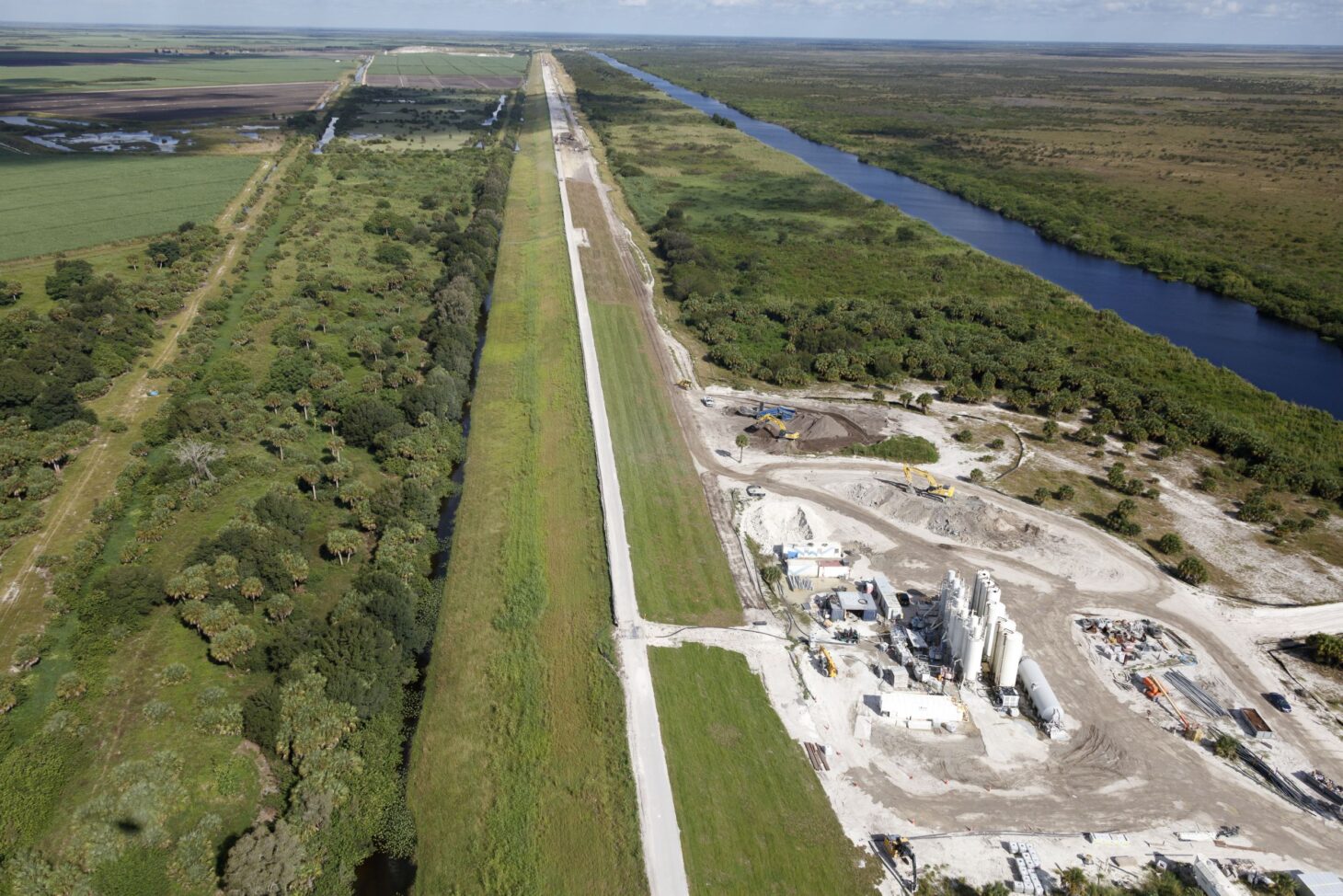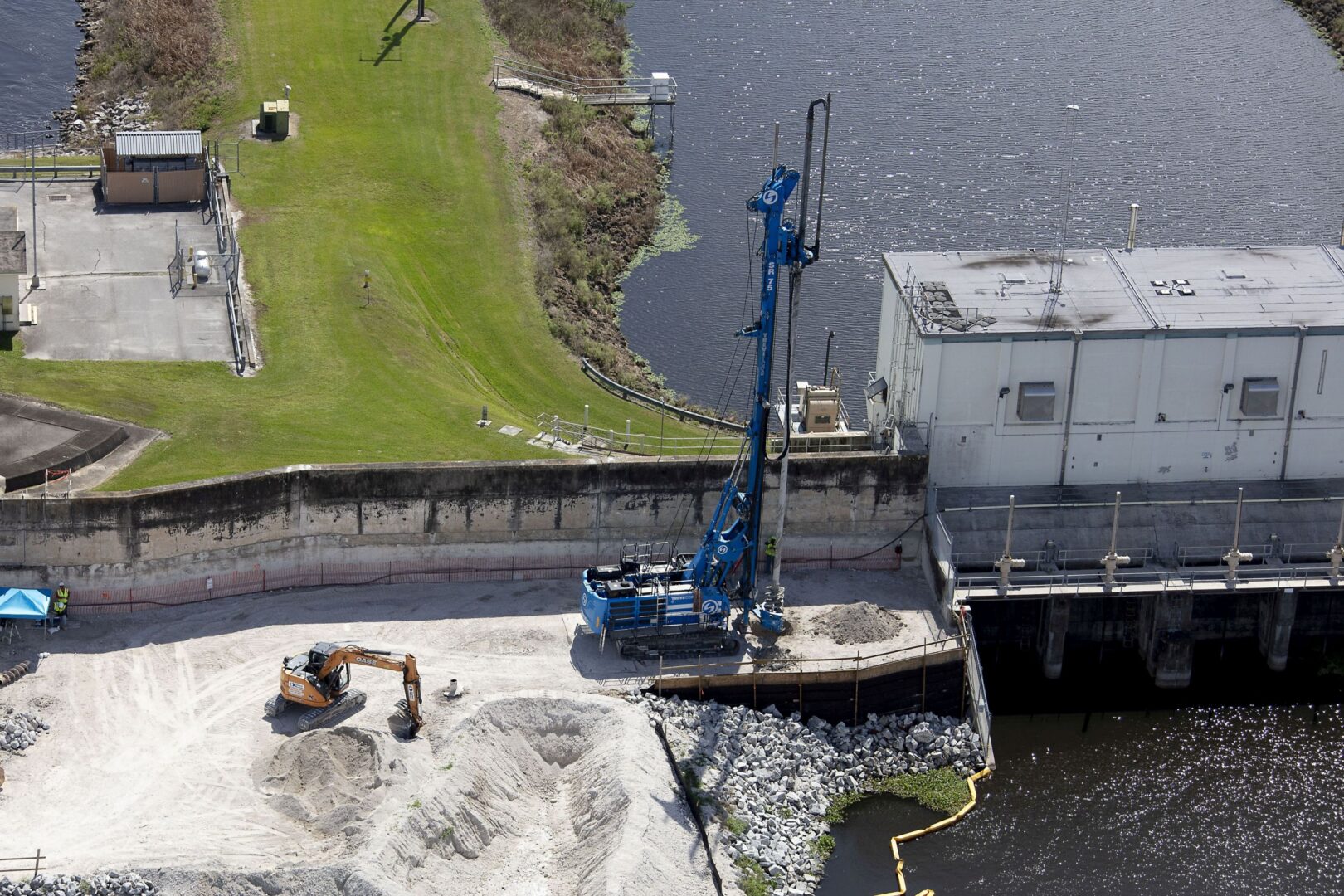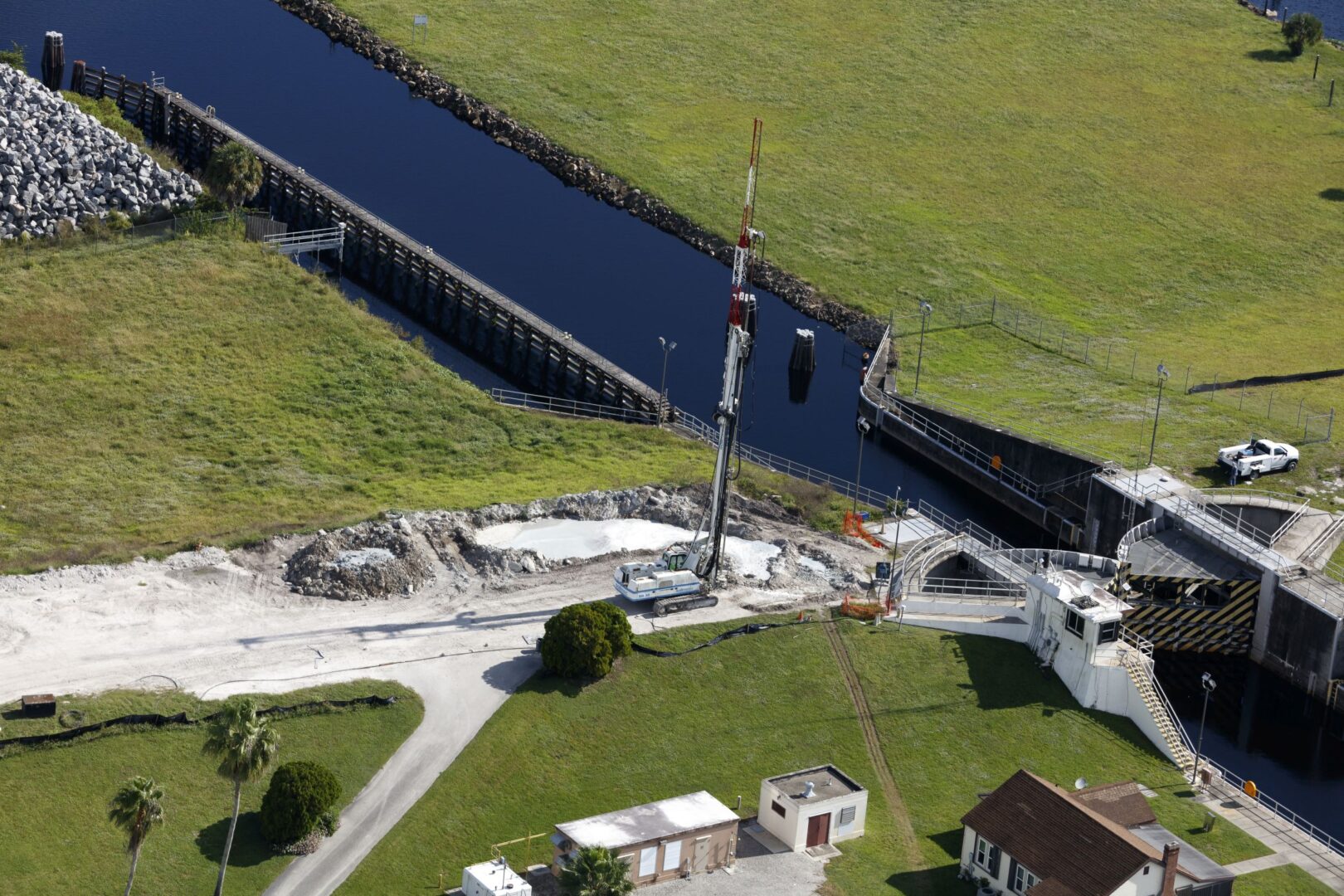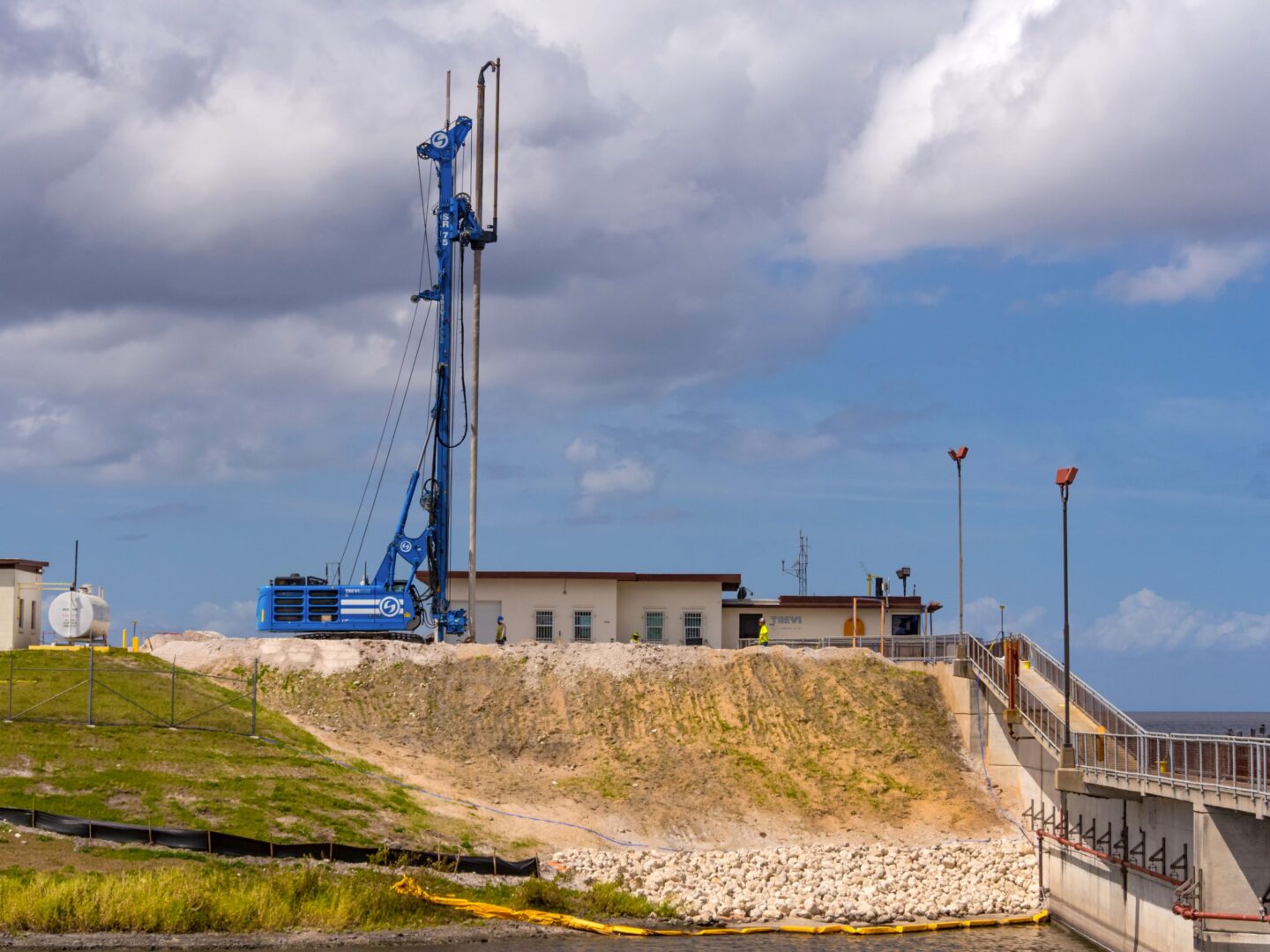
Since 2008, Treviicos, the North American subsidiary of the Trevi Group, has been involved in the Herbert Hoover Dike (HHD) rehabilitation program headed by the U.S. Army Corps of Engineers (USACE). Treviicos completed its last task orders by the end of 2022.
The HHD is a 143-mile-long earthen dam that surrounds Lake Okeechobee, the second largest freshwater lake within the U.S., located in south central Florida. The HHD was constructed in multiple phases, starting in 1910, for the purpose of flood risk management, navigation, agricultural and municipal water supply, prevention of saltwater intrusion, recreation and the enhancement of environment resources.
In 2007, the USACE classified HHD an unsafe water control system, with the risk of catastrophic failure, such as an uncontrolled water release. In the same year, the USACE released a Multiple Award Task Order Contracts solicitation for the dike’s rehabilitation.
The rehabilitation was designed to improve the dike’s stability by minimizing the water seepage through its foundation soils by installing a cut-off wall (COW) to act as an impenetrable barrier along the levee’s crest alignment.
Treviicos installed approximately 7.2 million square feet of COW to a maximum depth exceeding 25.9 metres (85 feet), substantially rehabilitating over 42 kilometres (25 miles) of the dike and operating as a specialty general contractor in all the projects they were involved in.

To meet the project’s requirements and ensure the stability of the dike during excavation, Treviicos pioneered the COW installation using self-hardening slurry by hydromill method. In this method, the slurry – an engineered mix of Portland cement, SLAG cement, bentonite, additives and water – acts as an excavation support and permanent backfill.
The excavation was generally performed using a mechanical clamshell and a hydromill. The former would excavate the “softer” soil layers, while the latter, typically mounted on a Soilmec SC120 heavy-duty crane, would excavate the more competent and limestone layers, ensuring the verticality and continuity requirements for the COW were complied with.
The rehabilitation also required the COW installation by jet grouting to close the areas adjacent to existing concrete structures (gates, locks, etc.). Treviicos used a combination of pre-drilling and jet grouting techniques. The pre-drilling, typically done using a Soilmec SR75 equipped with continuous auger, fragmented the hard limestone layers along the alignment of the COW, while the jet grouting created the required cut-off using a Soilmec SR30 rig set-up mainly in a mono-fluid jet grouting system.
All the projects also included additional scopes, such as: a quality control/quality assurance program to verify compliance with strict technical requirements, continuous environmental monitoring, slope protection during production, full site restoration upon completion of site activities, electronic data management and installation of an automatic data acquisition system for the future real-time monitoring of groundwater levels underneath the dike.
All seven task orders were successfully completed ahead of schedule and in full compliance with stringent safety and quality requirements while working in full partnership with the USACE.

Above and previous pages: aerial views of the jobsite at Herbert Hoover Dike

Treviicos installed approximately 7.2 million square feet of cut-off wall to a maximum depth exceeding 25.9 metres (85 feet), substantially rehabilitating over 42 kilometres (25 miles) of the dike
Background and project credits
Since 2001, the USACE has made a significant investment (over USD$870 million) in projects designed to reduce the risk of catastrophic failure of the aging structure around Lake Okeechobee to help ensure the safety of south Florida residents.
Further exacerbated by the COVID-19 pandemic, the Trevi Group successfully carried out the most long-lasting and challenging project in its North American history.
A large part of this success is credited to all the local suppliers and service providers that have allowed the different task orders to keep going even in the toughest times.
Trevi Group specializes in soil engineering (special foundations, soil consolidation and recovery of polluted sites), the design and marketing of specialized technologies in the sector and the construction of automated, underground and multi-storey car parks. The Group was established in Cesena in 1957; it has around 70 companies and, with its dealers and distributors, is present in 90 countries. Internationalization, integration and the continuous exchange between its two divisions have greatly benefited the Trevi Group: Trevi, which carries out special foundations and soil consolidation work for large infrastructure projects (subways, dams, ports and docks, bridges, railway and highway lines, industrial and civil buildings) and Soilmec, which designs, manufactures and markets machinery, systems and services for underground engineering.
The parent company, Trevi – Finanziaria Industriale S.p.A. (TreviFin), has been listed on the Milan stock exchange since July 1999. TreviFin is listed on Euronext Milan, which supersedes the old term MTA, as a result of the market rebranding activities that followed the acquisition of Borsa Italiana by Euronext N.V.
Photos courtesy of the Trevi Group